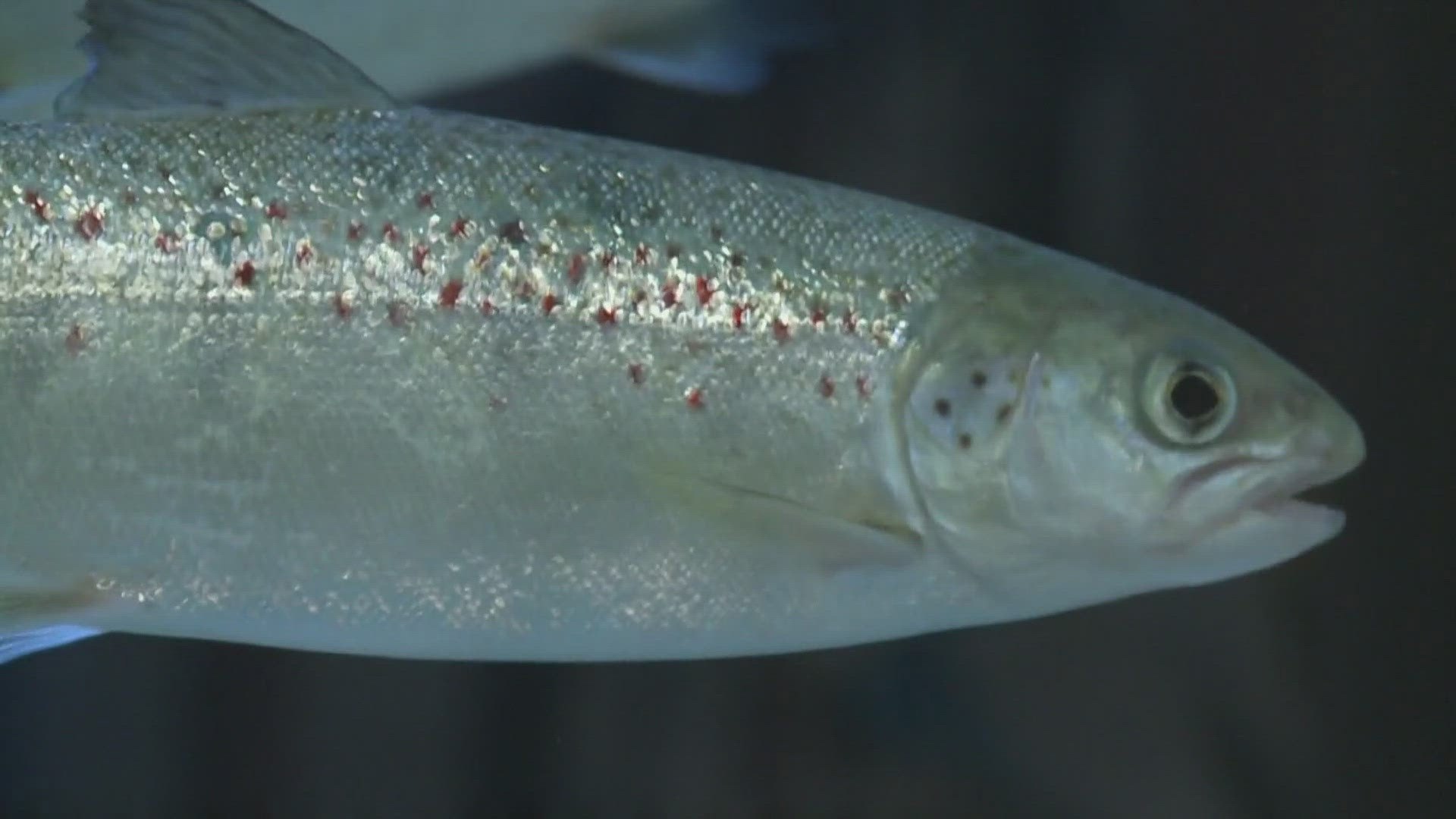FAIRFIELD, Maine — Can industry and conservation co-exist on the Kennebec River? The Federal Energy Regulatory Commission is asking the public some version of that question as it assesses the environmental impact of four dams on the river, most notably the Shawmut Dam, where owner Brookfield Renewable is seeking a re-up of its license, a process it began in 2020.
In late March, FERC published a draft of its environmental impact statement for the dam, recommending relicensing the project but inviting the public to comment on a long list of strategies to keep the dams running while mitigating harm to migratory fish, especially the endangered Atlantic Salmon.
In the plan, Brookfield is proposing adding passages and instruments to direct the fish downstream, while also promising to shut down turbines at Shawmut and other dams for 12 hours per day during the spring months to allow for the safe passage of smolt, or young salmon.
In a statement, a Brookfield spokesperson told NEWS CENTER Maine this and other efforts at conservation are intended "to carefully balance public, economic, energy, and natural resource interests."
But to many environmental groups, this is an impossible equilibrium to find when you're dealing with dams.
John Burrows, a vice president at the Atlantic Salmon Federation says the Kennebec hosts some of the best habitat for endangered Atlantic salmon, but that these man-made barriers are sacrificing this advantage.
"An entire ecosystem gets fundamentally changed when you have a series of dams and impoundments in what was a naturally free flowing river," Burrows said Thursday.
As for Brookfield's proposals to create better routes for the migratory fish to travel through the dams, Burrows says the water quality created under the conditions of a hydroelectric dam would still hamper conservation efforts, even if fish could move more freely.
"To have meaningful restoration and recovery of these public trust species, we really need to remove multiple dams," Burrows added.
While the public debates the environmental merits of implementing the points in the environmental impact statement, some are looking at other factors.
Joseph Lefebvre, who lives near the Shawmut dam in Fairfield, sees benefit in re-upping the license of a facility that can generate 10 megawatts of hydropower at some times.
"I think its an asset to the community. It provided a lot of power," Lefebvre said Thursday.
The public comment period for FERC's environmental impact statement ends June 4.

